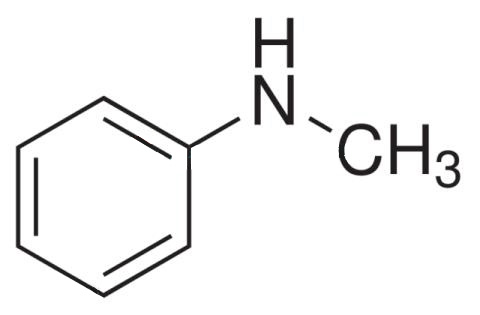Application of N-methylaniline
2020/12/17
![]()
N-methylaniline is a widely used fine chemical product. It is mainly used in the production of pesticides, dyes, dye intermediates, rubber additives and explosives. It can also be used as solvent and acid acceptor, as organic synthesis intermediates, acid absorbents and solvents. It is used in the production of cationic brilliant red FG, Cationic Pink B and reactive yellow brown kGr in dye industry. It can also be used to improve the octane number of gasoline, organic synthesis and solvent.
1. Application in pesticide
As for pesticides, N-methylaniline is mainly used to produce insecticides buprofezin (buprofezin, delphazin), which is a new type of highly selective insecticide with high activity to kill nymphs. Insects exposed to the insecticide die in molting stage. The recommended dose can not kill adults, but it can reduce egg laying and prevent egg hatching, which greatly reduces the number of offspring. It is safe to natural enemies and flower visiting insects. Because of the above characteristics, the production of buprofezin developed rapidly. Herbicides and fungicides are synthesized from N-methylaniline abroad. A new pesticide developed by Showa Electronics Co., Ltd. in Japan, methylsulfuron is used to control sedge and water borer pine in lawn and dry field, with low toxicity to useful plants. West Germany Schering company has developed a new kind of pesticide, aniphateuron, which can be used as a herbicide for dry land and garden, especially for all kinds of plants before sprouting. Schering also developed the herbicide kuoyeling, which is mainly used for weeding, and can also be used as a pre bud herbicide for peanut, cotton and soybean. In addition, Monsanto and Bayer also developed other herbicides with N-methylaniline.
2. Application in dyestuffs
In the dye industry, N-methylaniline is mainly used in the manufacture of intermediates and cationic dyes.
1) For the production of dye intermediates: n-methyl-n-benzylaniline and n-methyl-n-hydroxyethyl aniline are the main dye intermediates produced from N-methylaniline. N-methyl-n-benzylaniline is used to produce cationic red X-GRL (dye index number, refer to C.1., Basic Red 46). It is a dark red powder with compatibility value of 3.5. It can be used in the dyeing of acrylic fiber and its blended fabric, as well as the dyeing of modified acrylic fiber and polyester fiber. N-methyl-n-hydroxyethyl aniline is used to produce cationic blue X-GRRL (dye index number, refer to C.1., basic blue 41). It is a blue-green powder with compatibility value of 3.5. It is used for dyeing of acrylic fiber and its blends.
2) For the production of cationic dyes: the dyes directly produced from N-methylaniline include cationic brilliant red SGN (dye index number, refer to C.1., basic red 14), dark red powder, compatibility value 3.5: Cationic Pink FG (dye index number, C.1., basic red 13), dark red powder, compatibility value 4, Cationic Pink B (dye index number, refer to C.1., Basic Red 27) and reactive yellow Brown kGr. These dyes are mainly used in the dyeing and printing of acrylic fiber and its blended fabric. It can also be used for dyeing and printing of modified acrylic fiber, Taenia fiber and PVC fiber.
3. Application in rubber additives
N-methylaniline can be used to prepare rubber additive zmpc (zinc methylphenyldithiocarbamate). It is an accelerator for natural rubber and synthetic rubber. It is especially suitable for hard vulcanized compounds, such as ethylene propylene rubber. It is characterized by fast curing speed, scorch resistance, no frost spray on products and good thermal aging stability. In China, the product is developed by Northwest Rubber Industry Research Institute and Zhejiang Huangyan rubber additives group company. In addition, it can also be used in the manufacture of dithiodimethyldiphenylthiuram as vulcanization accelerator for natural rubber, styrene butadiene rubber and butadiene rubber. This product is produced by Shandong LVYE auxiliary Co., Ltd. In recent years, the annual consumption of synthetic rubber additives in China is about 100 tons. With the development of rubber industry, the consumption is expected to increase year by year.
4. Gasoline antiknock agent
Gasoline antiknock agent is a kind of oil additive which can improve octane number of gasoline and prevent or reduce knock. It is widely used in gasoline. At present, Antiknock Agents can be divided into two categories. One is metal Antiknock Agents, such as alkyl lead Antiknock Agents, manganese based Antiknock Agents, such as methylcyclopentadiene triacyl manganese, iron-based Antiknock Agents, such as ferrocene, rare earth metal compounds, etc. the other is non-metal Antiknock Agents, such as alcohol, phenol, ether, aromatic amine, Fusic acid vinegar and various polymers It is usually regarded as a high octane blending agent for gasoline. The results show that the antiknock effect of N-methylaniline is better. The use of organic amine compounds can widen the ignition limit range of the mixture, improve the ignition success rate, and effectively improve the octane number of gasoline.
5. Application in other aspects
N-methylaniline reacts with phosgene in ethyl acetate, then ethyl acetate is evaporated out and recrystallized with ethanol to obtain n-methyl-n-phenylaminophthalein chloride, which can be used as the intermediate of propellants and nitroglycerin propellants. In addition, N-methylaniline can also be used as solvent and acid acceptor.
Maanshan WideStone Chemical Sponsor Anhui ICP for 2020020438-1 disclaimer


